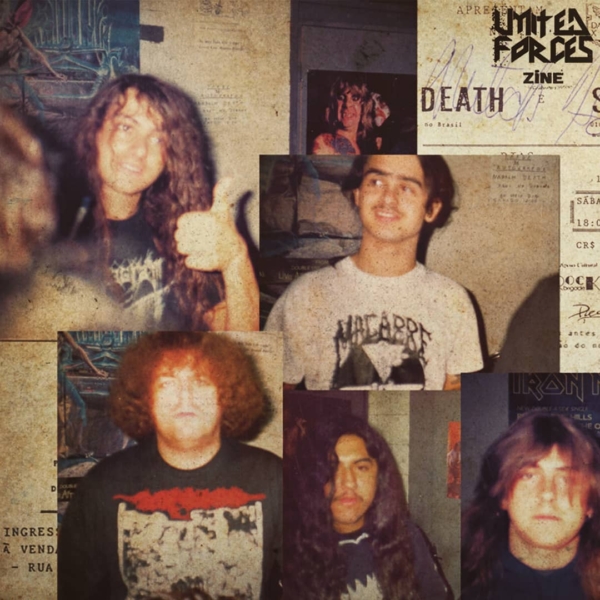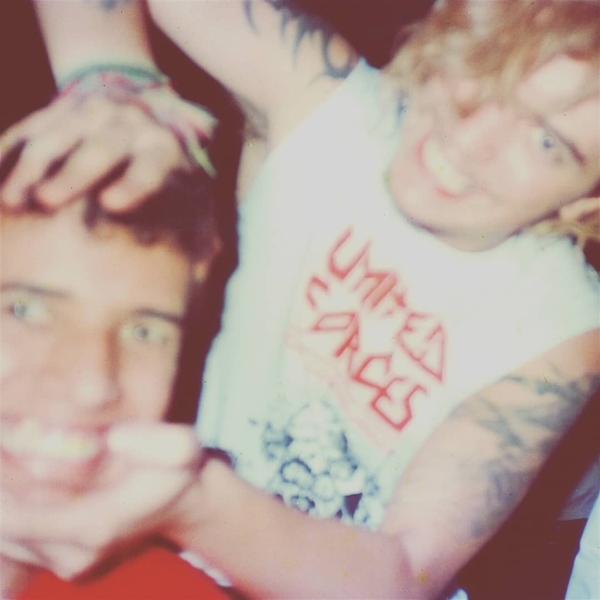Marcelo R. Batista – The Storyteller Of Brazil’s Raw Metal Attack

1. What inspired you to write a book about the Brazilian metal uprising in the 1980s?
When the idea first came to me, I refused it, because it would be almost impossible to write about a so vast scene as we had in Brazil in the 1980s. Later on, I thought I could limit this idea to the universe of my old fanzine, and write about the bands I had interviewed and about my own experiences going to concerts, buying records, and receiving letters from everywhere. I saw a few books that had already done similar stuff, and definitely thought I could create that, too. I am more than happy that I found in Bazillion Points a good home for the United Forces zine and the best partner to make this book happen.
2. Can you provide us with an overview of the main themes and key events covered in your book?
First, discovering the whole universe of metal bands and the impact that some of them had on me. Then, the incredible feeling that I could not only be part of this, but contribute myself by creating my own a fanzine. The first letters, getting in touch with people from other regions in Brazil, the exchange of experiences and later on the overseas contacts, it was all just such a rush. The Brazilian bands were best, as I became part of the whole thing, going to concerts and rehearsal rooms, watching bands record their demos, and so on.
3. How did you conduct research for your book? Did you interview musicians, fans, or industry professionals?
Nope! Almost everything was based on my own sources, archives, experiences, and memories. Only when my memory failed, I asked someone else.
4. What were some of the biggest challenges you faced while researching and writing about this particular era of Brazilian metal?
Putting everything in a correct and coherent timeline was tough!

5. Can you highlight any significant bands or artists that emerged during the Brazilian metal uprising in the 1980s?
Sure, for starters Chakal, Sepultura, Genocídio, MX, Korzus, Sarcófago, Overdose, Mystifier to mention a few.
6. How did the political and social climate of Brazil during that time influence the development of the metal scene?
In the particular year of 1985 when tons of bands either formed or became more well-known in the underground circuit, Brazil was still under military dictatorship. There was a lot of brutality and political repression. There’s no way to say that this scenario didn’t affect the music and the attitudes of those who played it or were involved in the metal and punk scene from that period. When you have a hard time getting things done, when everything else is so hard to come by, you have to find other ways to make it happen.
7. Were there any unique characteristics or subgenres that set Brazilian metal apart from other metal scenes around the world?
Yes, you can find unique characteristics in the raw sound and tough attitude from the very first hard rock and heavy metal bands like Karisma, Virus, and Stress, and the same in the mid-’80s thrash-death and black metal bands like Vulcano, Sepultura, Sarcófago, and Dorsal Atlântica. This impacted the more hard-headed metallers from the late ’80s and early ’90s to create something even more extreme that, in my opinion, was still very unique: the death core-noise played by bands like Necrobutcher, Dissector, and Trucidator.
8. In your opinion, what factors contributed to the united forces and collaboration among the Brazilian metal bands?
Maybe the need to overcome the difficulties to keep a band alive. The guys in bands shared everything, like rehearsal rooms, instruments, and even armbands and T-shirts! This all kept them united as a family in their mission.

9. Did the Brazilian metal uprising have any lasting impact on the global metal scene? If so, how?
I am not sure if it had a global impact, but many local scenes around the world were influenced by the rough sound of some Brazilian bands. Nowadays you can read or see about this.
10. Can you share any interesting anecdotes or stories from your research that didn’t make it into the book?
I could you tell you a dozen of them! Well, there is something I remember with a certain pain in my heart: Once, in late 1985 a friend came home saying that some metal bands were going to play in Osasco, my old hometown. He didn’t know the names, but for us this didn’t matter. We took a bus directly to Osasco downtown, but before going to the concert place, he wanted to buy two bottles of a very cheap and strong drink. At the time I didn’t drink alcohol that much and the guy finished most of both bottles by himself. What came next was terrible, we ended up having to go to the hospital because he was totally out of his mind and puking like a beast! About the concert? I ended missing something that would have been a real experience in my life. One of the bands playing that day was Vulcano, and that would be my first time seeing them. Fortunately I soon had many more chances to experience them live.
12. How do you think the legacy of the 1980s Brazilian metal uprising continues to resonate in Brazil’s music culture today?
Talking only about the metal underground, you can check hundreds of new bands that still sound as though they were formed in the ’80s. When worldwide metal had some kind of decline or changed a lot in the ’90s, Brazil wasn’t too affected by the new trends—nu metal, or funk metal, especially. More or less, we kept faithful to the roots. Today it’s still true that most Brazilian metalheads still enjoy the rawer sounding bands. Thank you!
Information about the book & interview photos: United Forces Brazilian Metal Sepultura Vulcano Sarcofago (bazillionpoints.com)


